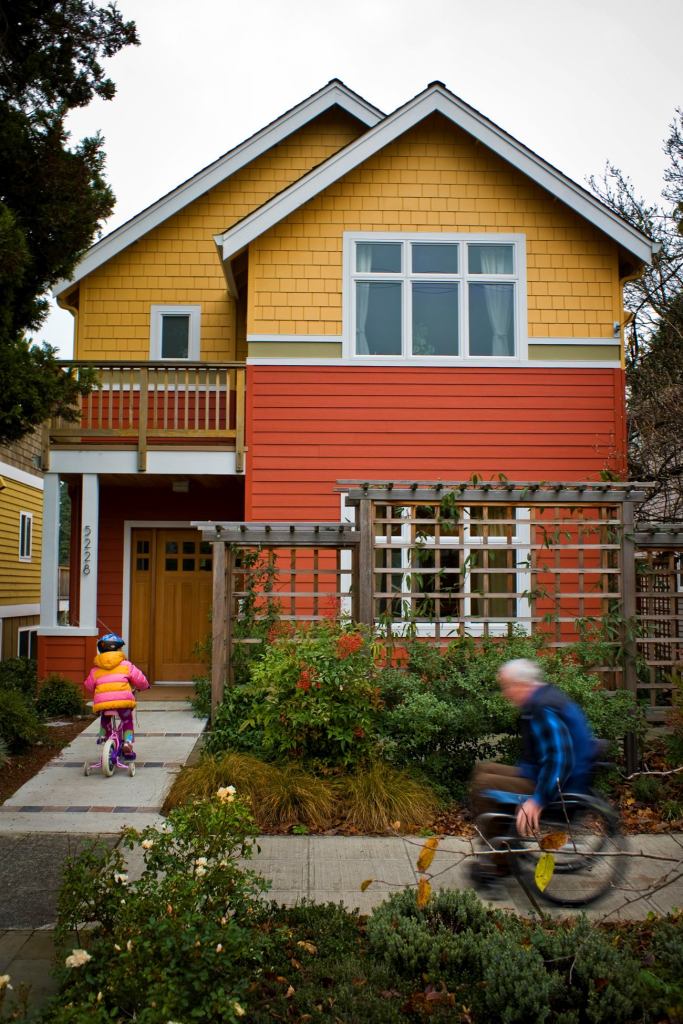Green Lake Residence, Seattle
Architect: ZAI
Architect Emory Baldwin designed his own urban infill house as a demonstration home to prove that aesthetics and accessibility can easily go hand-in-hand. “An accessible home can just as easily be an attractive home that is marketable to the mainstream,” he said. This handsome little house is designed to evolve with its owners to accommodate varying life changes. Currently the residence is occupied by Baldwin’s young family, but it’s designed to eventually accommodate the architect’s in-laws, whom he expects will move into the house in the years ahead. A space that currently serves as a home office and studio is primed to morph into a mother-in-law apartment. Stacked closets that are currently used to store tricycles, bikes, and strollers are framed, pre-wired, and configured to form a continuous shaft so that an elevator can be easily installed at a later date.
Other key features include zero-threshold entryways, smooth surface flooring, radiant floor heating, and an open plan that makes living spaces easily maneuverable for wheelchairs. “When you remove barriers, small spaces also seem bigger because they flow together,” Baldwin added during a case study presentation.
There’s delight in many of the finer design details. One bathroom vanity, for example, is actually two pieces–a fixed countertop and sink, underneath which is a detached storage cabinet on lockable casters that can be easily rolled away to allow wheelchair access.

